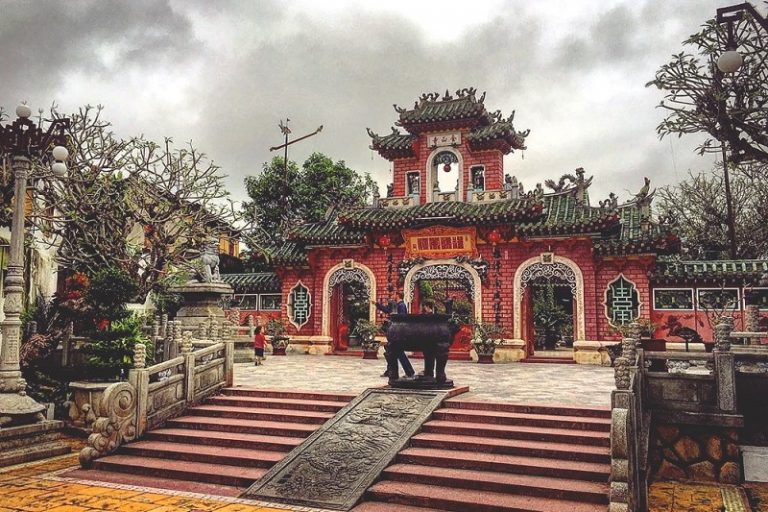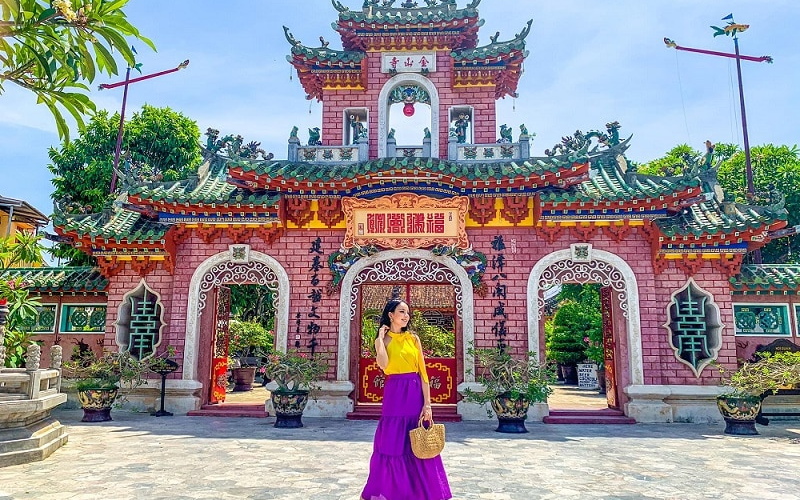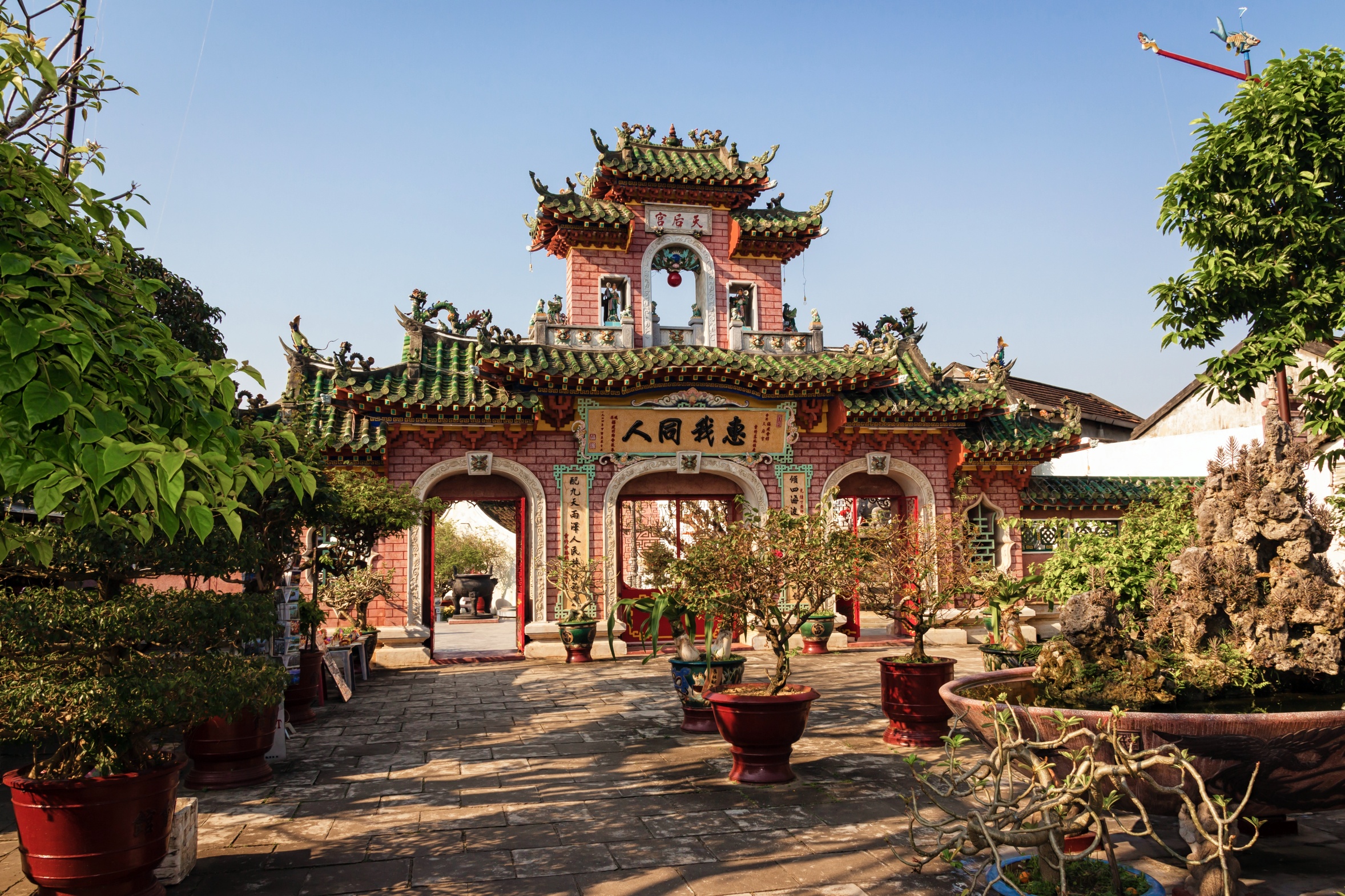
Assembly hall Hoi Quan Phuoc Kien in Hoi An city, Vietnam, Asia, Stock Photo, Picture And Rights
Cẩm nang khám phá Hội quán Phúc Kiến Hội An từ A-Z không nên bỏ lỡ. Tọa lạc tại số 46 đường Trần Phú, Hội quán Phúc Kiến là một điểm đến lịch sử và tâm linh của phố cổ Hội An. Nơi đây được du khách yêu thích nhờ mang đậm giá trị lịch sử, văn hóa và nghệ.

Giới thiệu về Hội Quán Phúc Kiến Hội An nét đẹp được gìn giữ
Hoi An ancient town is a must-visit destination in Vietnam. This charming town is known for its well-preserved architecture, which reflects a fusion of Vietnamese, Chinese, and Japanese influences. Walking through the narrow streets, visitors can admire the beautifully decorated buildings, ancient houses, and colorful lanterns that light up the town at night. Hoi An is also famous for its.

Gate to the Fujian chinese Assembly Hall "Hoi Quan Phuc Kien" in Hoi An, Vietnam Stock Photo Alamy
Hoi Quan Phuoc Kien is also known as the Fujian Assembly Hall. It is the biggest clan hall and temple in Hoi An. We need a ticket from the Ancient Town admission tickets to enter. There are beautiful decorations inside the colourful building. It is also cool inside, just nice to take a rest from the hot sun outside.

Hoi quan Phuoc Kien Phố cổ Hội An Wikipedia tiếng Việt Viết, Người pháp, Việt nam
Fujian Assembly Hall (Hoi quan Phuoc Kien) 46 Tran Phu Street. The largest and oldest assembly hall in Hoi An was first built in the 1690s by six founding Fujianese families. Since then, the hall has gone through several renovations funded by Fujianese residents of Hoi An. A tiled pathway leads from the outer gate to a more elaborate three.

hoi quan Phuoc Kien or Phuoc Kien Congregation assembly hall, Hoi Anancient town, unesco world
Hội quán Phúc Kiến - 4 phút. Tương truyền, tiền thân của Hội quán là một gian miếu nhỏ thờ pho tượng Thiên Hậu Thánh Mẫu (bà chúa phù hộ cho thương nhân vượt sóng gió đại dương) vớt được tại bờ biển Hội An vào năm 1697. Qua nhiều lần trùng tu, với sự đóng góp.

hoi quan Phuoc Kien or Phuoc Kien Congregation assembly hall, Hoi Anancient town, unesco world
Immerse yourself in the rich history and vibrant atmosphere of Hoi Quan Phuoc Kien, a stunning Chinese temple in the heart of Hoi An. Suggested Duration - 1 hour. What To Expect? Explore the ornate temple, admire the intricate carvings and colourful decorations, and learn about the temple's significance to Hoi An's Chinese community.

Fujian Assembly Hall An architectural gem of Hoi An
Hoi Quan Phuoc Kien is one of the five assembly halls located inside the Ancient Town of Hoi An. It was built as a community center and place of worship by migrating Chinese families who settled in Hoi An after the collapse of the Ming Dynasty. Built in the 1690s, the hall comprises a courtyard, two rows of residential houses, the main hall, a.

Hội quán Phúc Kiến Kiến trúc độc đáo giữa lòng phố Hội
Kinh nghiệm khi tham quan Hội quán Phúc Kiến. Để chuyến tham quan trọn vẹn, bạn nên lưu ý một số điều sau: 4.1. Đường đi đến Hội quán Phúc Kiến. Hội quán Phúc Kiến nằm trên đường Trần Phú - một trong những trục đường chính của phố cổ Hội An. Do đó, bạn có thể.

Hội Quán Phúc Kiến Điểm đến tâm linh giữa lòng phố cổ Hội An
Fujian Assembly Hall (or Fujian Temple, Thien Hau Temple, the Goddess Temple, Hoi quan Phuoc Kien) is the largest among five Chinese assembly halls of Hoi An. Facing southwest, it's built in 1757 in the oldest road of the town that today is called Tran Phu street.

Hội quán Phước Kiến Du lịch Hội An Dulich24
The Phuoc Kien Assembly Hall, located at 46 Tran Phu Street, is a famous sign of Hoi An's trading history and displays rich architectural features that reflect strong Chinese influence.. The building was constructed in 1692 by Vietnamese people living in Hoi An and originally a Buddhist thatched pagoda called Kim Son. It unfortunately became very damaged and was eventually sold to the rich.

Fukien Chinese Congregation Assembly Hall, Phuoc Kien Hoi Quan, Hoi An Ancient Town, Vietnam
Hoi Quan Phuoc Kien is also known as the Fujian Assembly Hall. It is the biggest clan hall and temple in Hoi An. We need a ticket from the Ancient Town admission tickets to enter. There are beautiful decorations inside the colourful building. It is also cool inside, just nice to take a rest from the hot sun outside.

Hội Quán Phúc Kiến Hội An Hội Quán đáng tham quan nhất Hội An
You are free: to share - to copy, distribute and transmit the work; to remix - to adapt the work; Under the following conditions: attribution - You must give appropriate credit, provide a link to the license, and indicate if changes were made. You may do so in any reasonable manner, but not in any way that suggests the licensor endorses you or your use.

Fukien Chinese Congregation Assembly Hall, Phuoc Kien Hoi Quan, Hoi An Ancient Town, Vietnam
Giá vé tham quan Hội quán Phúc Kiến. Hội quán Phúc Kiến nằm trong danh sách 21 điểm tham quan tại phố cổ. Nên để vào đây bạn phải mua vé tham quan phố cổ Hội An. Với tấm vé này bạn sẽ được khám phám nhà Hội quán và thêm 2 địa điểm khác (tự chọn). Giá vé cụ thể:

Assembly Hall (Hội quán Phước Kiến) , Hoi An, Vietnam Viagem com Charme
Số điện thoại: 0235.3666333. Thời gian tham quan tại một điểm: 60 phút. Mở cửa: 8:00 SA - Đóng cửa: 5:00 CH. Email: [email protected]. Địa chỉ: 46 Trần Phú, Phường Minh An, Thành phố Hội An, Tỉnh Quảng Nam. Tiền thân của hội quán là một gian miếu nhỏ thờ pho tượng.

hoi quan Phuoc Kien or Phuoc Kien Congregation assembly hall, Hoi Anancient town, unesco world
Hoi Quan Phuoc Kien is also known as the Fujian Assembly Hall. It is the biggest clan hall and temple in Hoi An. We need a ticket from the Ancient Town admission tickets to enter. There are beautiful decorations inside the colourful building. It is also cool inside, just nice to take a rest from the hot sun outside.

Fukien Chinese Congregation Assembly Hall, Phuoc Kien Hoi Quan, Hoi An Ancient Town, Vietnam
Fujian (Phuc Kien) Assembly Hall was built around 1690 and functions as a traditional assembly hall for the Chinese ethnic group from Fujian, China to socialise, but later was transformed into a temple dedicated to their deity named Thien Hau - the goddess of sea who protects sailors from danger. As told by the preceding generations, the.